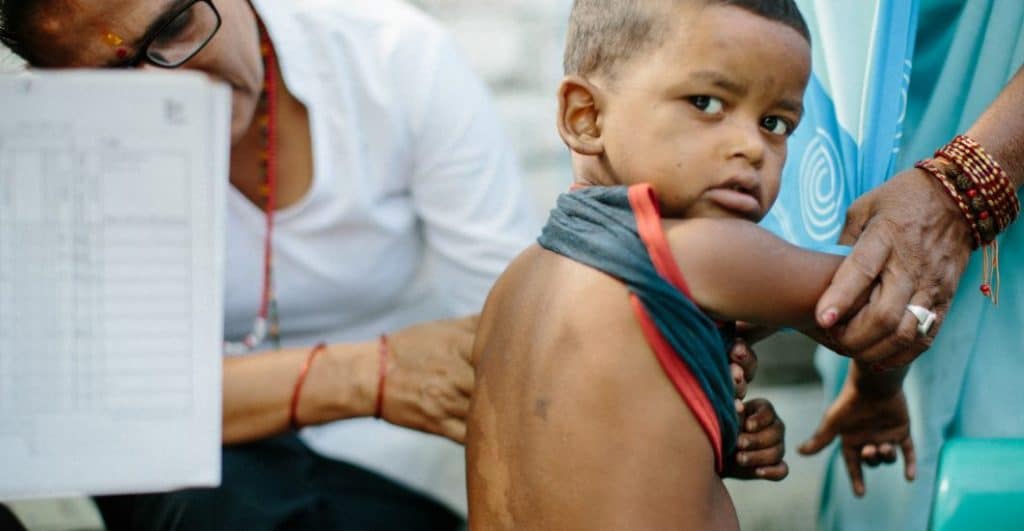Leprosy is a disease included in the neglected disease category which still needs attention because it causes problems. The problems caused by leprosy mainly occur when it was detected too late, resulting in permanent disability, the emergence of this disability often creates social stigma and economic losses. The stigma can reduce the productivity of individuals. Leprosy can also threaten children living in these areas because the immunity system in children is still not perfect and the transmission in leprosy endemic areas is still quite high.
Based on the 2016-2020 Global Leprosy Strategy, leprosy eradication is focused on early detection of cases before disabilities appear. A special focus is given to children as a way to reduce disability and transmission. The global target is zero disability among new pediatric leprosy patients by 2020.
East Java is still the province with the highest leprosy sufferers, spread over 37 regencies / cities. Leprosy endemic areas in East Java are still clustered mostly on the north coast of East Java, while on the south coast the prevalence is low (3). Indonesia still reports the incidence of leprosy with 84.5% of cases of the Multi-Bacillary (MB) type. From the new cases every year, 8.9% are in children and of these cases, it is known that 6.7% of cases lead to disability.
Leprosy endemic areas in Indonesia are spread unevenly. East Java is called a leprosy pocket area because it is clustered around the north coast and the island of Madura. From the area with a prevalence rate and cannot be free from leprosy, it is suspected that environmental factors play an important role in the transmission pattern of leprosy. The environment can be a reservoir of leprosy transmission because it is related to the nature of the leprosy germ, which is an obligate intracellular bacteria, or it cannot live freely until it finds a new host.
Epidemiological studies of leprosy in children can provide an overview of important aspects of the environment, especially the pattern of leprosy transmission in endemic areas, because children have lower mobility than adults. In this regard, research was carried out on school children in one of the endemic and non-endemic areas of leprosy in East Java.
According to the results of research conducted by Adriaty et al. (2020), through the ELISA serologic test and PCR test, children in endemic areas obtained an immune response to the Phenolic glycolipid-I antigen ( PGL-1), a specific antigen of the Mycobacterium leprae bacteria, higher than in non-endemic areas, 48 , 3% and also obtained higher PCR results, 21.4% when compared to the children in non-endemic areas. The presence of Mycobacterium leprae DNA on nasal swabs and the immune response of anti-PGL-1 IgM antibody seropositive in elementary school children can illustrate exposure to Mycobacterium leprae in that area.
Based on the results of the study, children who are in endemic areas are at least 5 times more likely to contract Mycobacterium leprae than in non-endemic areas. Environmental factors can be a source of leprosy transmission in endemic areas. Based on several research reports previously carried out in leprosy endemic areas in Indonesia, it is shown that positive DNA of Mycobacterium leprae was obtained in water consumed daily and obtained same genotype variations of M. leprae DNA detected from water, leprosy sufferers and household contacts and healthy residents in the region. It can be concluded that environmental factors, agents and hosts in leprosy endemic areas are closely related.
Subclinical leprosy in children must be considered because it can also play a role as a source of transmission, both in endemic areas and imported cases in non-endemic areas of leprosy, although it has not been clinically manifested as leprosy, but monitoring must then be carried out. Healthy individuals who are in contact with sufferers should be evaluated annually for a minimum of five years and given prompt counseling and attention if there are skin or neurological changes that are suspected symptoms of leprosy. Therefore, public education about leprosy accompanied by monitoring and surveys on household contacts and school children which is implemented nationally will be able to help reduce the incidence as well as prevent new cases of leprosy in Indonesia.
Author: Dinar Adriaty, S.Si, M.Kes
Details of this research can be viewed at: https://www.scopus.com/inward/record.uri?eid=2-s2.0-85090439232&doi=10.4081%2fidr.2020.8748&partnerID=40&md5=69b3ac0983a91fc218895b2c0160b732
(LEPROSY TRANSMISSION IN ENDEMIC AND NON ENDEMIC AREAS BASED ON THE PROFILE OF ANTIBODY RESPONSE OF PGL-1 AND PCR DETECTION OF Mycobacterium leprae DNA FROM NASAL SWAB AMONG HEALTHY CHILDREN OF EAST JAVA INDONESIA. Infectious Disease Reports 2020; vol 12 (s1):8748)





